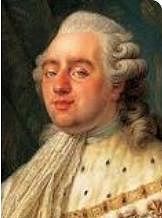Test: The French Revolution - 2 - UPSC MCQ
25 Questions MCQ Test Old & New NCERTs for IAS Preparation (Must Read) - Test: The French Revolution - 2
| 1 Crore+ students have signed up on EduRev. Have you? Download the App |
Which of the following constituted the privileged class ?
Which of the following believed social position must depend on merit ?
Society based on freedom, equal laws and opportunities was advocated by :
Which of the following refuted the doctrine of divine and absolute right ?
Who was King in France at the time of the Revolution ?

Voting in the Estates General was conducted on the principle of ?
Where did the Third Estate form and announce the National Assembly ?
Which of the following was a factor in the rise of Napoleon ?
The most important of the privileges enjoyed by the clergy and nobility
What was the convention in the context of revolutionary France?
What did the red cap worn by Sans Culottes in France symbolise ?
Which period in the history of France is known as Reign of Terror ?
|
3 videos|643 docs|564 tests
|
|
3 videos|643 docs|564 tests
|

















